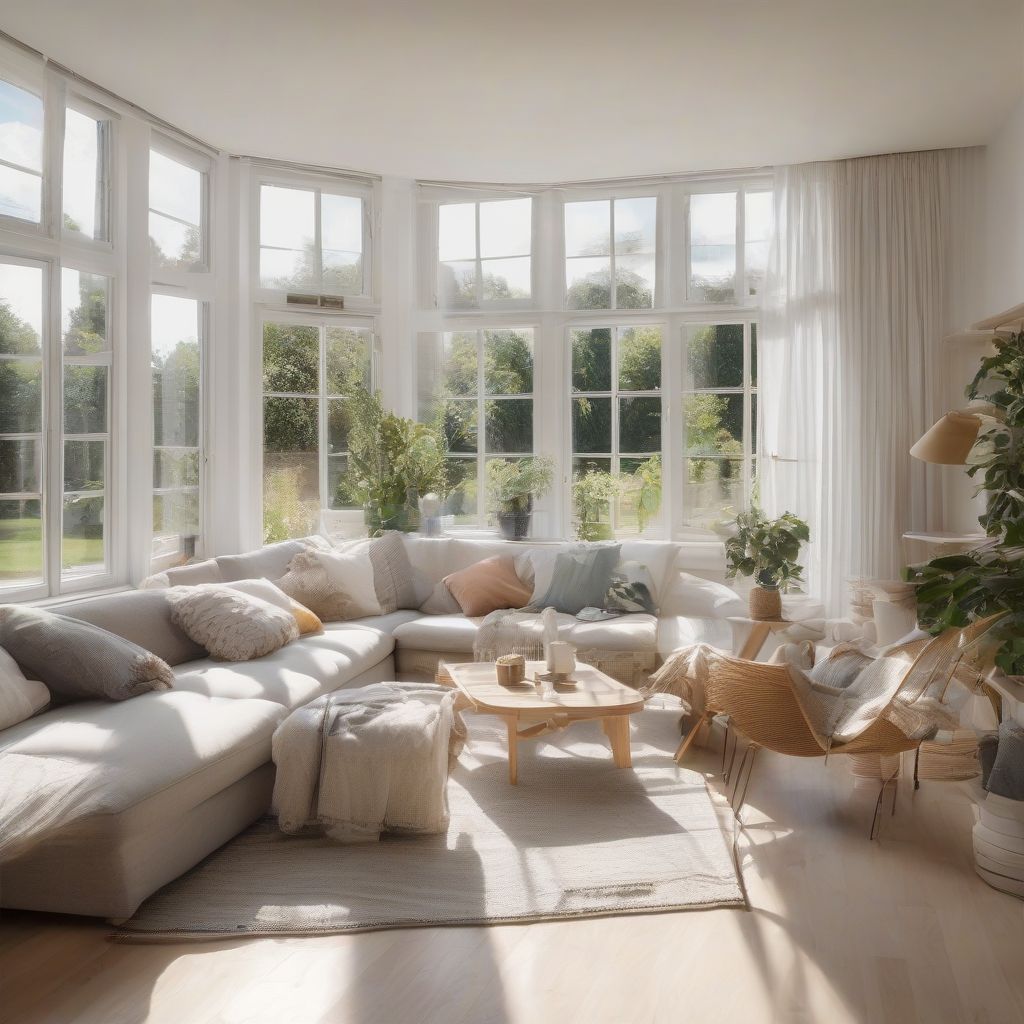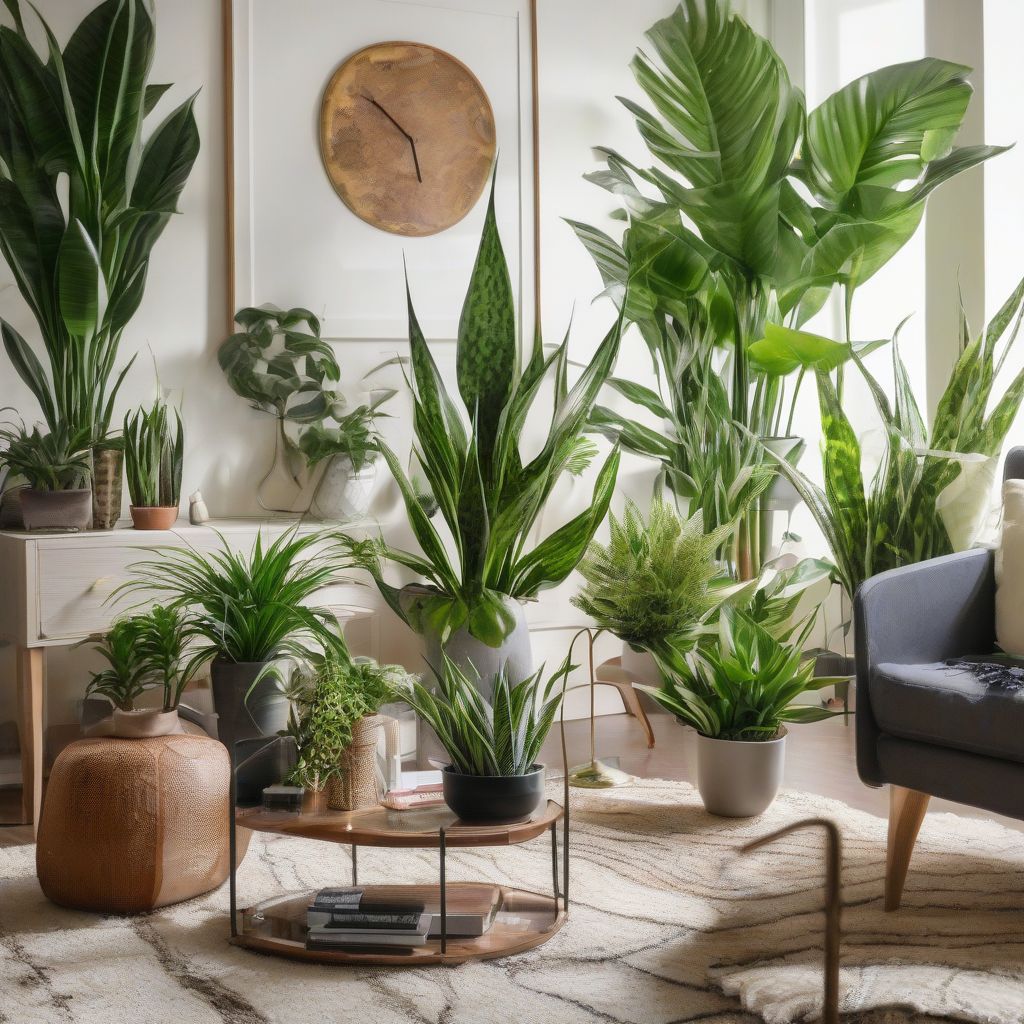Imagine stepping into your home, a haven of sustainability with its solar panels, reclaimed wood floors, and thriving houseplants. But what about the air you breathe inside? Improving indoor air quality is a crucial aspect of creating a truly healthy and eco-friendly living space.
As a nutritionist and meal prep coach, I understand the importance of nourishing your body from the inside out. And just like choosing nutritious foods, cultivating healthy air within your green home is vital for your well-being.
Why Indoor Air Quality Matters, Especially in Green Homes
You might be surprised to learn that indoor air can be 2-5 times more polluted than outdoor air, even in eco-conscious homes. Why? Green building materials, while sustainable, can sometimes release low levels of volatile organic compounds (VOCs). Additionally, energy-efficient designs often limit natural ventilation, trapping pollutants inside.
But don’t worry, creating a green home with fresh, clean air is entirely achievable. Here’s how:
Ventilation: Let Your Home Breathe
Good ventilation is the cornerstone of healthy indoor air.
Natural Ventilation: Harness the Power of Fresh Air
- Open windows and doors: Whenever possible, encourage cross-ventilation by opening windows on opposite sides of your home.
- Use window fans: Place fans strategically to draw in fresh air and expel stale air.
Mechanical Ventilation: When Natural Isn’t Enough
- Install exhaust fans: Ensure bathrooms and kitchens have properly working exhaust fans to remove moisture and odors.
- Consider an energy-recovery ventilator (ERV): These systems replace stale indoor air with fresh outdoor air while minimizing energy loss.
 Open Windows for Ventilation
Open Windows for Ventilation
Source Control: Minimize Pollutants at Their Root
Preventing pollutants from entering your home in the first place is key.
Choose Low-VOC Products:
- Paints, varnishes, and finishes: Opt for low-VOC or zero-VOC options.
- Furniture and flooring: Look for products made with natural materials and formaldehyde-free adhesives.
- Cleaning supplies: Choose fragrance-free, natural cleaners or make your own using ingredients like vinegar and baking soda.
Control Moisture:
- Fix leaks promptly: Address any plumbing leaks or water damage immediately to prevent mold growth.
- Use dehumidifiers: Maintain indoor humidity levels below 50% to discourage dust mites and mold.
- Vent appliances properly: Ensure clothes dryers, stoves, and bathroom fans are vented outdoors.
Air Purification: Cleanse the Air You Breathe
Air purifiers are your allies in removing remaining pollutants.
Choose the Right Air Purifier:
- HEPA filters: Look for purifiers with HEPA filters, which are proven to remove 99.97% of particles 0.3 microns or larger, including dust mites, pollen, and pet dander.
- Activated carbon filters: These filters are effective at removing odors and gases.
Place Strategically:
- Bedrooms: Place an air purifier in bedrooms to improve sleep quality.
- Living areas: Consider purifiers in areas where your family spends the most time.
Green Living: Embrace Nature’s Air Purifiers
Bring the outdoors in with houseplants known for their air-purifying qualities.
Top Air-Purifying Plants:
- Snake plant: This low-maintenance plant releases oxygen at night, making it ideal for bedrooms.
- Spider plant: Easy to propagate, spider plants effectively remove formaldehyde and xylene.
- Peace lily: Known for their elegant flowers, peace lilies are excellent at removing ammonia, benzene, and formaldehyde.
 Indoor Plants Cleaning Air
Indoor Plants Cleaning Air
Healthy Habits: Simple Steps for Fresher Air
- Vacuum regularly: Use a vacuum cleaner with a HEPA filter to trap dust mites and allergens.
- Wash bedding weekly: Use hot water to kill dust mites.
- Don’t smoke indoors: Smoking pollutes indoor air significantly.
- Take off shoes at the door: This helps prevent tracking in dirt, pesticides, and allergens.
[amazon bestseller=”air purifier”]
Breathe Easy in Your Green Oasis
Creating a green home extends beyond sustainable materials and energy efficiency—it’s about fostering a healthy and vibrant living environment. By prioritizing indoor air quality, you can transform your green home into a true sanctuary, a place where you can breathe deeply, relax, and thrive.
What steps will you take today to improve the air quality in your green home? Share your thoughts and experiences in the comments below!
